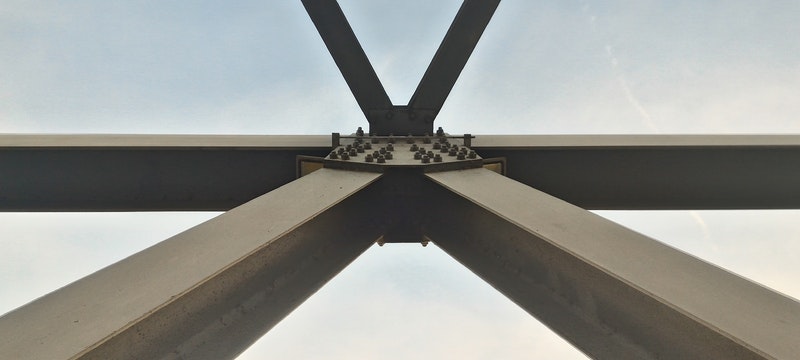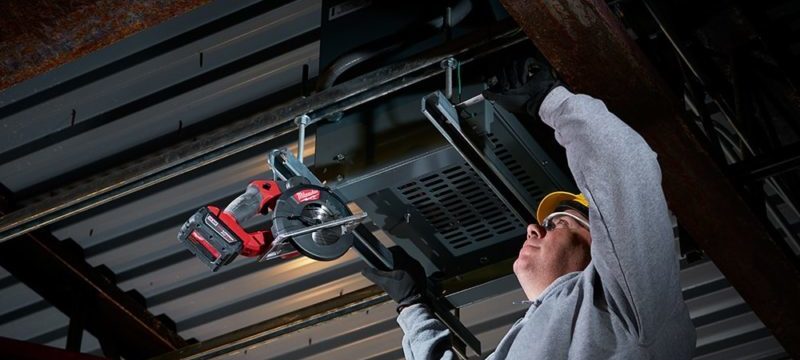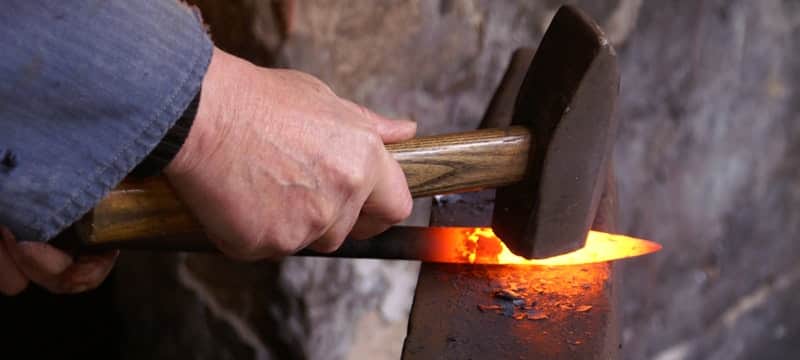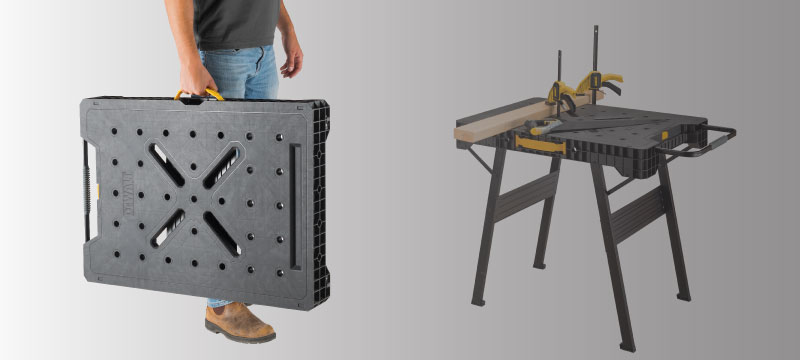Which is best?
Metal working circular saw or portable band saw. A quick Google search will reveal the popularity of the metal circular and portable band saw. It will also show that everyone asks the following:
- Which saw should I buy for cutting metal?
Both saws are excellent for their intended jobs, and metal is a specific job. But because it is a critical issue, our blog post today explains the differences between a metal circular and portable band saw.
A Background To Cutting Metal
Cutting metal is different than cutting wood or other materials because of the heat that the cutting process creates. Saw blades and the material they are cutting generate heat through friction. Some saw blades and saw types significantly affect how you cut various materials; today, we are talking specifically about metal.
Metal Circular Saw
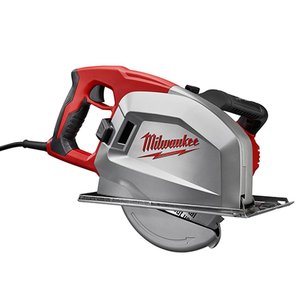
A metal circular saw is a saw that is designed for, well, cutting metal. It may be hand-held or mounted to a machine for easier use. Another term for a metal circular saw is a cold saw. This type of saw uses a toothed blade to transfer the heat generated to the chips created by the saw blade. This design helps ensure that both the blade and the metal being cut remain cool to the touch.
How Does a Metal Circular Saw Work?
Abrasive blades create heat and should not be used to cut metal. Heat causes both the metal and the blade to expand and will cause the metal to warp or bind. It also generates more wear and tear on the saw and increases energy consumption.
A cold saw can cut through most metals with relative ease. The powerful electric motor and gear reduction unit are designed to reduce the blade’s speed without a reduction in torque. This creates a high chip load per tooth with remarkable consistency.
Blade Types for Metal Circular Saw
- Solid Tooth High-Speed Steel.
- Segmental Tooth.
- Tungsten Carbide Tipped.
More Information about the Metal Circular Saw
- Power – Electric variable speed motor. Steady torque. Gear reduction.
- Cutting Speed – Consistent cutting speed without overheating.
- Sparks – Fewer sparks than competitors.
- Dust – No dust.
- Discoloration – Less discoloration than competitors.
- Switch Materials – Change the blade on the saw to cut varied materials.
- Switch Directions – The circular saw does not change directions quickly.
- Cuts Thick Materials – The circular saw can cut materials as thick as the blade allows. A larger blade can cut thick materials.
- Weight and Manageability – Extremely easy to manage and lightweight.
Portable Band Saw
The band saw is a saw that is often used for structural steel in metal fabrication shops. They are also used for bar stock in machine shops. They are available in horizontal or vertical styles for a variety of uses.
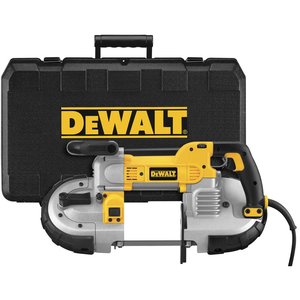
How Does A Portable Band Saw Work?
The blades available for a portable band saw are shaped like a ring or band. The band continually rotates on the wheels, creating a smooth cutting motion. The band saw can cut straight lines or change direction quickly to create curves.
More Information about the Portable Band Saw
- Power – Powerful electric motor.
- Cutting Speed – Consistently fast cutting speed with negligible heat production.
- Sparks – Few sparks.
- Dust – Extraordinarily little dust.
- Discoloration – No discoloration.
- Switch Materials – Change materials anytime or as often as you wish.
- Switch Directions – Change directions carefully and as often as you wish.
- Cuts Thick Materials – The portable band saw cuts thick materials with ease.
- Weight and Manageability – The portable band saw is less agile or manageable than the circular saw.
The Final Say
Both saws have their strong points and their weak points. Each can be used for a variety of cutting needs. Both can cut through thick materials based on your saw size and blade. So how do you choose?
It boils down to the way you need to use the saw. The band saw is better with irregular and curved cuts, whereas the circular saw is better with straight lines. The mobility requirements of the job also play a big part in the type of saw you use. If you need to be nimble and use the saw at odd angles, you may need a circular saw for lightweight maneuverability.
Remember: Saw Safety
Both saws are powerful and can be dangerous in the wrong hands or inexperienced hands. Always use safety equipment, including goggles and gloves, and ensure you stand to the side of the saw to prevent injury due to kickback.

